Technologies
This section briefly introduces the range of different technologies that make use of specific quantum phenomena in new ways, what they could do, and how they might be used in future. We focus on those use cases that may involve processing personal information or have privacy and information rights implications. Our list excludes many other plausible and near-term use cases.
Timelines are not predictions, but are intended to reflect plausible futures.
1. Quantum sensing, timing and imaging
Many quantum sensing, timing and imaging technologies are best described as an evolution of existing technologies, offering new or significantly improved capabilities. Potential use cases range across academic research, medical diagnostics, autonomous vehicles, navigation, military and law enforcement surveillance.
Quantum sensors
Quantum sensors make use of specific quantum phenomena to detect and measure tiny physical changes, such as in magnetic fields, gravity and temperature. The ‘next generation’ of quantum sensors are significantly more accurate and more precise than existing sensors, either offering new sensing capabilities or enhancing existing capabilities 7. In future, they could be smaller, lighter and more cost effective than current sensors, if hardware improves and technical challenges are addressed 8. There are examples of investment and pilots across sectors such as the military, healthcare, neuroscience research, civil engineering and environmental monitoring.
There are many different categories of quantum sensor, such as quantum magnetic sensors and quantum gravity sensors. There are also different types of sensor within these broad categories.
- Quantum magnetic sensors could be used in various industries, from medical research to defence. For example, some types of sensor can be used for non-invasive, portable and more detailed medical diagnostic tools. This includes wearable brain scanning for epilepsy and Alzheimer’s, or diagnosing strokes in a GP surgery. These sensors are able to detect tiny changes in magnetic fields, such as changes generated by individual neurons firing in the brain or by muscle movement 9.
- Quantum gravity sensors could be used to detect and map underground infrastructure and hazards (such as pipes or cables) to much greater depths and more precisely than existing gravity sensors can. They could also be used for underwater mapping and navigation. One class of these sensors uses falling clouds of cold atoms to detect tiny changes in the Earth’s gravitational field caused by objects or, hypothetically, the presence of people. If successfully miniaturised, they could be used on a moving vehicle, or even a drone, unlike current versions.
Quantum timing technologies
Optical clocks are the next generation of ultra precise quantum timing technologies. The time measurements provided by existing quantum clocks (known as atomic clocks) are used for a range of purposes. For example, coordinating high speed online communications or determining location for navigation systems like GPS. Integrating even more precise and compact versions into navigation systems could be used:
- as a faster, more accurate alternative to GPS that is more resilient to jamming by malicious actors. The system could also function better in situations when GPS signal is affected by the environment (such as on a train in a tunnel, or underwater); or
- to enable advanced radar systems to:
- identify stealth objects or small objects, such as drones, at greater distances; or
- provide real time location insights and understanding of congested environments 10.
Quantum enhanced imaging
Cameras using novel quantum imaging technologies could offer significantly better resolution (detail) and contrast than existing imaging techniques, along with new capabilities 11.
Depending on the type of imaging technique, use cases could include:
- defence and covert surveillance;
- search and rescue or law enforcement cargo scanning to combat human trafficking;
- improving how autonomous vehicles detect and respond to objects in real time; and
- improving non-invasive medical diagnostics and screening for conditions such as cancer.
Researchers have developed ways to give a visible image even in very low light environments, using only a single particle of light. This gives clear images for example, in fog, smoke or underwater. Some techniques can be used to take a picture in infrared using a normal camera, which has applications for biomedical imaging. Others can be used to detect objects and the presence of people around corners, behind walls, or through some opaque surfaces. They use an extremely fast camera to detect scattered particles of light. The next step for many of these techniques is to continue piloting and further refining them for real world applications. Others are far more experimental, such as ‘quantum ghost imaging’ (a technique for taking a picture even when light has not interacted with the object).
Broadly, many quantum sensing, timing and imaging technologies are at a more advanced stage of technical development than other quantum technologies. Some are already in the early stage of commercialisation. Despite significant UK investment for pilots in sectors such as defence, healthcare and infrastructure, there are still some barriers to further adoption, such as:
- commercial competition from existing technologies that are already highly effective and widely used. Novel use cases will need to demonstrate that they are fulfilling a specific unmet need 12;
- ongoing technical efforts to reduce size and cost; and
- supply chain challenges.
This means that the future market for many potential use cases most relevant to our remit is still highly uncertain.
Timelines for development of use cases
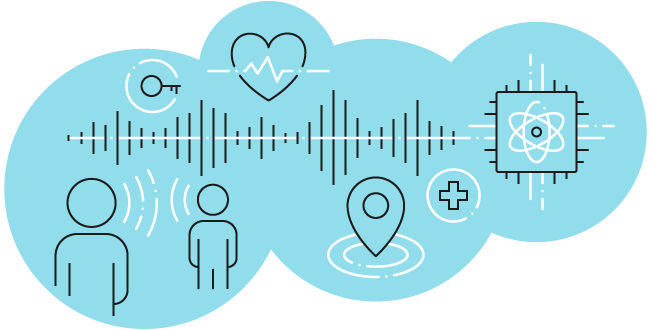
Current-five years |
Increasing academic and military research. Some initial commercial prototypes |
 |
We could see the following:
|
Five-10 years |
Timescale and potential market for use cases outside healthcare and military highly uncertain over next five-10 years |
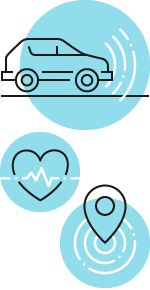 |
|
10-15 years |
Timescales and potential markets still highly uncertain. If pilots and initial applications are commercially and practically successful, we could see wider uses of quantum sensing and imaging techniques in addition to or instead of classical technologies |
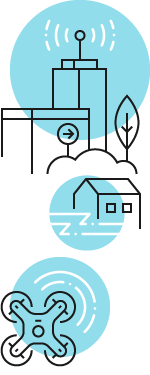 |
We could see the following:
|
15-25 years |
Potential wider integration (eg in healthcare and surveillance) |
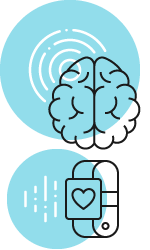 |
We could see the following:
|
2. Quantum computing
In theory, a fully functional quantum computer could solve certain problems exponentially faster than the computers we use today. This includes some problems that are so difficult and time-consuming for classical computers to solve that they are considered ‘unsolvable’.
They are most likely to only be used for specific computational problems because they:
- are built very differently; and
- solve problems in a different way.
Organisations that do use quantum computing services are more likely to use them alongside existing computers, rather than to replace them. They are expensive and technically complex, so organisations are also more likely to use quantum computing services through the cloud. At least at this stage, the cost of accessing quantum resources is one of the barriers to wide-scale use 13.
As discussed in further detail later in this report, quantum computing also has well-documented impacts on certain types of encryption and future information security 14. We are interested in the ongoing efforts to address the risks to personal information that quantum computing may present.
Quantum computers make use of particle behaviour at an atomic or subatomic level to run computations. Classical computers (the computers we use today) process information represented as sequences of 1s and 0s (called digital ‘bits’). In contrast, quantum computers use quantum bits called ‘qubits’. Qubits can represent two states at the same time. This means they can be in both a position of 0 and 1, or importantly, somewhere in between. Qubits can be linked in a way that enables them to represent even more states at the same time. The phenomena responsible for this are known as superposition and entanglement. Due to these properties, the processing power of a quantum computer grows at an exponential rate for each extra qubit.
As noted in our most recent Tech horizons report, researchers are still working out which real-world problems may be best solved using a quantum computer. Many potential use cases are still theoretical, including many that could involve processing personal information. There are also significant barriers to overcome before we reach a fully functional quantum computer, also known as a “universally fault tolerant quantum computer”. It is even possible that we may never reach “quantum advantage” for some use cases (eg if classical machine learning overtakes quantum advances).
Many early anticipated use cases are unlikely to involve processing personal information. For example, using a quantum computer to solve a materials science or physics research problem. Therefore, they would not fall within the scope of data protection legislation. However, researchers and industry are exploring potential future use cases that include the following:
- Factorising very large numbers, which has implications for long term information security. Factorising underlies many existing encryption algorithms that protect digital information and communications.
- Modelling highly complex systems and simulating new chemicals, which offers possibilities for advances in areas like drug discovery and development and personalised medicine.
- Solving hard optimisation problems (ie problems that involve identifying the best option from multiple combinations). For example, in order to optimise workforce scheduling.
- Accelerating machine learning or improving data analysis for applications such as:
- genomics;
- biometrics;
- natural language processing;
- analysing and predicting customer behaviour for product targeting;
- improving fraud detection in real time transaction information; and
- classifying images, such as medical scans for diagnostics.
- Increasing search speed within complex datasets, or speeding up the systems used to recommend products and content on online shopping or media platforms.
Depending on what the computer is being used to calculate, the quantum computer may be processing personal information. Or, the outcome of its calculation may be applied to classical personal information and used to generate insights.
Researchers are also exploring different ways that quantum technologies could be used as, or combined with, classical privacy enhancing technologies (PETs) in future. There is research into:
- hybrid quantum computing to improve the computational efficiency of certain PETs 15;
- federated quantum machine learning, which would allow a group of organisations to process sensitive information (such as special category data) individually using a quantum computer, and share insights (but not the raw information) with a combined classical model to improve it; and
- blind quantum computing, which offers a person or organisation accessing a quantum computer from the cloud, a different way to completely hide the problem they are solving, the calculation, and answer from the quantum computing server (and the organisation that provides the quantum computing service).
Timelines for development of use cases
Current-five years |
Noisy intermediate-scale quantum computers (smaller scale prototype computers) and experimentation phase 16.Prototype versions of quantum computers are already available via the cloud for research purposes and industry testing.Partnerships with companies and quantum computers available for public to access remotely for very short periods of time |
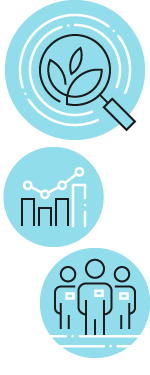 |
We could continue to see the following:
Other experiments include:
|
Five-10 years |
Mid-scale quantum computers (1000 or more qubits) may begin to demonstrate quantum advantage for certain real world applications (eg improving machine learning) |
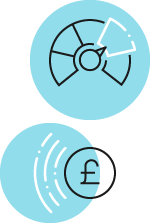 |
|
10-15 years |
By 2035, the UK is aiming for a sufficiently advanced quantum computer capable of demonstrating high impact in sectors such as healthcare and finance |
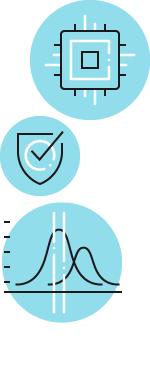 |
|
15-25 years or more |
Universal fault tolerant computers (computers sufficiently powerful and reliable for a wide range of real world applications) |
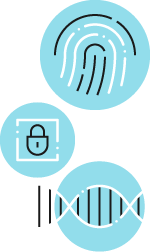 |
We could see developments that include the following:
|
3. Quantum communications
There are ongoing UK testbeds and trials of quantum communication networks as an additional way to address the risks to encryption posed by a future quantum computer. Proponents argue that quantum communications will complement the security provided by other techniques, such as post-quantum cryptography 18.
Quantum communications refers to ways of transmitting information securely using quantum mechanics 19. The main technique is known as quantum key distribution (QKD), a way of securely sharing encryption keys. QKD uses the physical properties of light in a quantum state, rather than using maths problems for security (as in classical encryption). Essentially, sharing the key is secured using the laws of nature 20.
Some suggest that in future QKD could be used together with post-quantum cryptography. This would help protect highly sensitive information transfers against a future quantum computer capable of solving the mathematical problems used in certain types of encryption 21. It could secure a range of devices, systems and personal information processing, from securing mobile two-factor authentication for online banking to smart buildings and wider digital communications 22. However, QKD is not currently endorsed by the NCSC for future post-quantum security.
Some stakeholders suggest that QKD is already technically viable. For example, the Quantum Communications Hub have operated a testbed UK quantum network for many years. BT and Toshiba are trialling a commercial QKD network in London. Some other countries are also experimenting with, or have rolled out, QKD networks.
Despite this progress, there are several hurdles in the UK to overcome for further development, such as:
- the cost of implementing QKD networks;
- levels of government and industry demand; and
- appetite to invest.
Hardware and engineering limitations also mean that quantum information can currently be transmitted across and between UK cities (up to 100km), but not internationally 23.
Beyond QKD, in the medium term, researchers also hope to link together smaller quantum computers in different places into a more powerful quantum computer. This also opens up the much longer-term possibility of a future national and international network of quantum computers, referred to as a “quantum internet”. This would run alongside the classical internet to securely send and receive information in a quantum state (eg qubits), which current networks cannot do. The quantum internet could also be used to send information still in its quantum state from a quantum sensor network (such as in a smart city) to a quantum computer for analysis 24.
Research into linking quantum computers together is still in the early stages of development. As a first step towards a quantum internet, researchers are currently exploring other ways to securely transmit information in a quantum state rather than as classical information 25. The Quantum Communications Hub is also exploring ways to link quantum computers together. Furthermore, in 2024, UK researchers linked several networks together in a single quantum state for the first time 26.
Timelines for development of use cases
Current-five years |
|
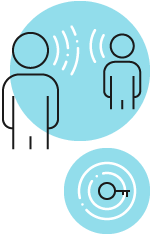 |
|
Five-10 years |
|
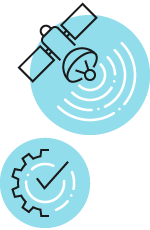 |
|
10-15 years |
|
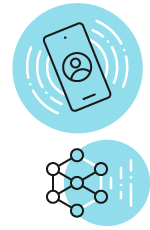 |
|
15-25 years or more |
|
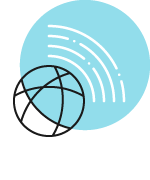 |
|
Further reading
- UK National Quantum Technologies Programme strategic intent paper 2020
- Department for Science, Innovation and Technology (DSIT) Policy paper on the national quantum strategy missions (2023)
- Website for The Quantum City
- Quantum Delta NL Centre for Quantum and Society exploratory quantum assessment
- EY quantum readiness survey 2022
- GESDA radar: Quantum sensing and imaging
- Website for the UK Quantum Technology Hub in Quantum Enhanced Imaging
- UK National Quantum Technologies Programme article: Look around corners with the quantum periscope
- Nature Perspectives article on Non-line-of-sight imaging (2020)
- Quantum computing for finance: State of the art and future prospects
- German Federal Office for Information Security article: A study of implementation attacks against QKD systems
- APS Physics article: Quantum drones take flight (2021)
7 UK Quantum Sensing and Timing Hub webpage on quantum sensing: big to small technology; Regulatory Horizons Council Independent report on regulating quantum technology applications (2024)
8 For example, interference from the external environment in real world use cases currently impacts on the accuracy of the measurements.
9 See, eg, Cerca Magnetics website introducing their brain imaging system based on optically-pumped magnetometers (known as an OPM-MEG System); Quantum Sensing and Timing Hub webpage on sensing the brain
10 UK Quantum sensing and timing hub webpage on pinpointing the exact location
11 Cureus article on the quantum-medical nexus: Understanding the impact of quantum technologies on healthcare (2023)
12 IEEEAccess research article on Exploring quantum sensing potential for systems applications (2023)
13 techUK report on Quantum commercialisation: Positioning the UK for success (2022) . In the short term, accessing them is likely to involve at least some access to overseas quantum computing capacity, as the UK continues to scale its domestic infrastructure.
14 Specifically, it could be used to solve the mathematical problems that are used in some common types of encryption. See, eg NCSC whitepaper on preparing for quantum-safe cryptography (2020)
15 Such as fully homomorphic encryption.
16 These machines are mid-scale working quantum computers with 50-100 or more qubits. They are prone to errors. They are a step on the road to a fully functional quantum computer that exceeds the performance of super computers and can be used for experimentation and demonstrating some early capabilities. See, eg, DRCF quantum technologies paper and Article by John Preskill on quantum computing in the NISQ era and beyond (2018)
17 Polygenic risk scores look at the potential impact of many genomic markers to estimate “an individual’s genetic risk for some trait” or disease. Nuffield Department of Population Health article from the Frontiers journal on calculating polygenic risk scores (PRS) in UK Biobank: A practical guide for epidemiologists (2022)
18 Post-quantum cryptography is a new type of classical encryption believed to be resistant to the known risks posed by a future quantum computer - that is, the ability to factorise large numbers and undermine some types of existing encryption.
19 Quantum Communications Hub webpage on the background to quantum communications technologies
20 More specifically, the key is sent as a quantum light pulse, which changes when measured. So, any attempt to copy, intercept or eavesdrop when sending the encryption key would introduce detectable errors. Quantum Communications Hub article on quantum key distribution. QKD is however susceptible to what are known as implementation and side channel attacks: German Federal Office for Information Security article: A study of implementation attacks against QKD systems.
21 This is known as a cryptographically relevant quantum computer.
22 See eg, Quantum Communications Hub: What does QKD mean for the economy?; Quantum Communications Hub: Consumer QKD
23 Efforts are ongoing to use satellites to allow communication over longer distances.
24 University of Chicago News article on the quantum internet, explained; IET Quantum Communication article on the quantum internet: A synergy of quantum information technologies and 6G networks (2023)
25 IET Quantum Communication article on the quantum internet: A synergy of quantum information technologies and 6G networks (2023); DRCF Quantum Technologies Insights Paper
26 Imperial College London news release ‘Crucial connection for ‘quantum internet’ made for the first time’ (2024)